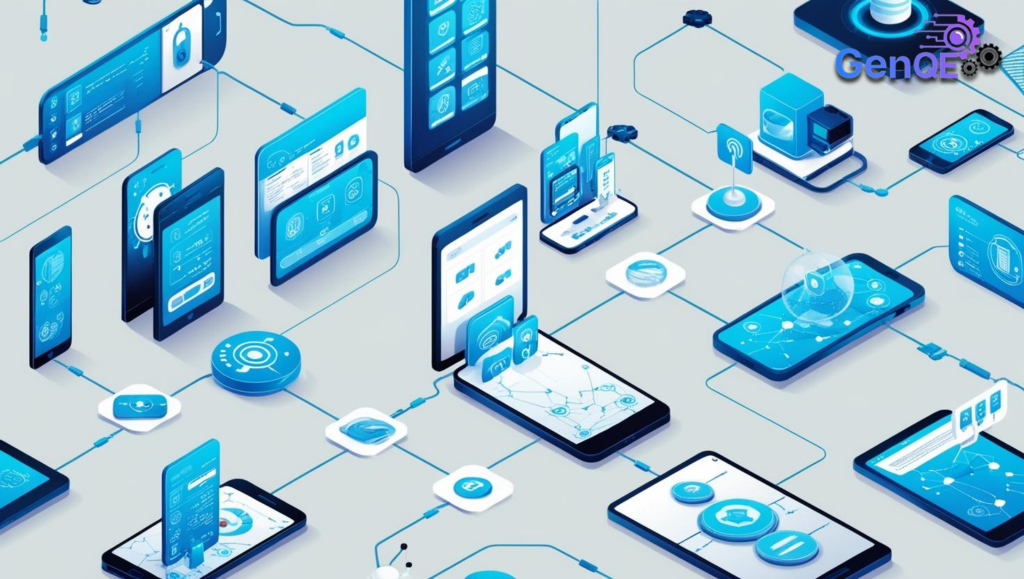
Introduction
The rapid pace of technological innovation has introduced groundbreaking advancements in artificial intelligence (AI), blockchain, and quantum computing. While these technologies promise to revolutionize industries, they also present unique challenges for software testing and quality assurance. Unlike traditional software applications, emerging technologies require specialized testing methodologies that can address issues related to security, performance, and scalability.
Testing methodologies must evolve to keep pace with these advancements. Traditional testing techniques are often inadequate for these new technologies, as they introduce complexities such as non-deterministic behavior in AI, immutability in blockchain, and quantum superposition in quantum computing. This article explores the challenges and solutions for testing these cutting-edge technologies and provides insights into the future of quality assurance.
Testing Artificial Intelligence (AI) Systems
Challenges in AI Testing
AI-driven applications, such as machine learning models and neural networks, are fundamentally different from conventional software. Instead of deterministic logic, AI systems rely on data-driven decision-making, which introduces several challenges:
- Non-Deterministic Outputs: AI models may produce different results for the same input under varying conditions, making traditional test case validation difficult.
- Bias and Fairness Testing: AI models can inherit biases from training data, leading to ethical concerns and biased decision-making.
- Explainability: AI decisions are often made through complex, opaque models, making it challenging to understand why certain predictions were made.
- Continuous Learning: AI models evolve over time, requiring continuous validation and monitoring.
AI Testing Strategies
To address these challenges, new testing strategies are required:
- Data Validation: Ensuring that training data is diverse, representative, and free from bias.
- Model Explainability Testing: Using tools like LIME (Local Interpretable Model-Agnostic Explanations) to make AI models more interpretable.
- Robustness Testing: Evaluating how AI models perform under adversarial conditions or unexpected inputs.
- Continuous Monitoring: Deploying AI models with real-time performance tracking to detect anomalies and drifts.
Testing Blockchain Applications
Challenges in Blockchain Testing
Blockchain technology, known for its decentralized and immutable nature, presents unique testing challenges:
- Immutable Transactions: Once recorded, blockchain transactions cannot be altered, making defect resolution complex.
- Consensus Mechanism Testing: Different blockchains use different consensus mechanisms (e.g., Proof of Work, Proof of Stake), requiring validation.
- Smart Contract Vulnerabilities: Smart contracts are self-executing programs on the blockchain and can be exploited if not properly tested.
- Scalability Issues: As more transactions occur, the performance of blockchain networks can be impacted.
Blockchain Testing Strategies
- Smart Contract Auditing: Conducting rigorous code reviews and security audits before deployment.
- Performance Testing: Simulating high transaction volumes to evaluate blockchain scalability.
- Security Testing: Identifying vulnerabilities such as reentrancy attacks, 51% attacks, and front-running.
- Integration Testing: Ensuring seamless communication between blockchain components and external applications.
Testing Quantum Computing Applications
Challenges in Quantum Computing Testing
Quantum computing leverages principles like superposition and entanglement to solve problems beyond classical computing’s capabilities. However, testing quantum applications presents several challenges:
- Quantum State Instability: Quantum states are fragile and can be affected by environmental factors, leading to errors.
- Probabilistic Nature: Quantum algorithms provide probabilistic outputs rather than deterministic results.
- Limited Debugging Tools: Existing debugging tools for classical computing are ineffective for quantum systems.
- Quantum Hardware Constraints: Quantum processors have limited qubits and error rates, making large-scale testing difficult.
Quantum Computing Testing Strategies
- Quantum Circuit Verification: Validating quantum logic gates and ensuring correct circuit behavior.
- Quantum Error Correction: Implementing techniques like surface codes to reduce quantum computation errors.
- Simulation-Based Testing: Using quantum simulators to test applications before deploying them on actual quantum hardware.
- Benchmarking Quantum Performance: Comparing quantum computations against classical algorithms to assess their effectiveness.
The Future of Testing Emerging Technologies
The future of software testing will be shaped by new methodologies designed to handle the complexities of emerging technologies. Some key trends include:
- AI-Augmented Testing: AI will play a crucial role in automating test case generation and predicting potential failures in complex systems.
- Decentralized Testing Frameworks: As blockchain applications grow, decentralized and crowd-sourced testing approaches will become more prevalent.
- Quantum-Resilient Algorithms: As quantum computing matures, testing strategies will focus on developing algorithms resistant to quantum attacks.
- Automated Compliance Testing: With stricter regulations on AI and blockchain, automated compliance testing will become essential to ensure ethical and legal adherence.
Conclusion
Testing emerging technologies requires innovative approaches that go beyond traditional methodologies. AI, blockchain, and quantum computing each present unique challenges that demand specialized testing frameworks. By leveraging AI-driven automation, robust security auditing, and quantum simulations, organizations can ensure that these cutting-edge technologies meet the highest quality and performance standards.
As these technologies continue to evolve, software testers must stay ahead by adopting new skills, exploring advanced testing tools, and developing strategies that can handle the complexities of next-generation applications. The future of software testing lies in continuous learning, adaptability, and technological foresight.